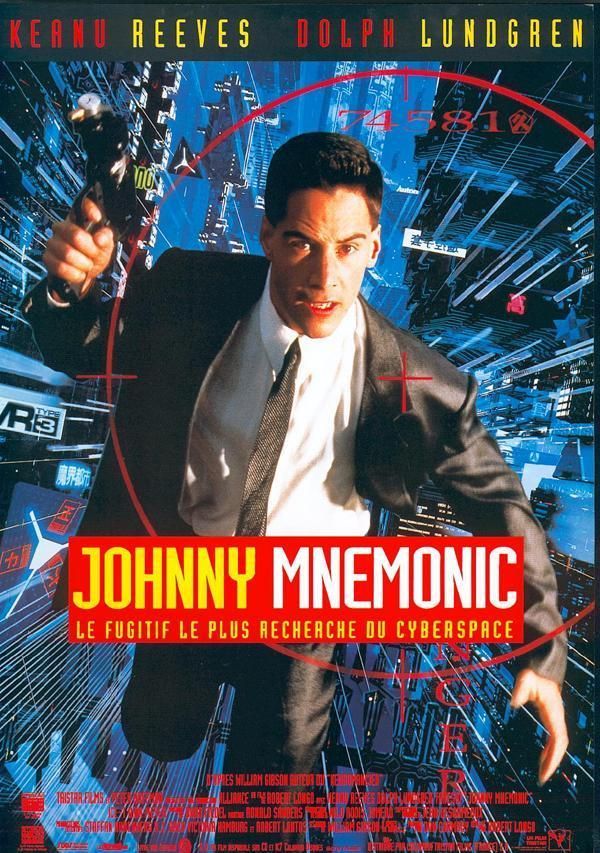Johnny Mnemonic a short story by: William Gibson
first seen in Omni Magazine's May 1981 issue

William Gib-son's, Johnny Mnemonic, was visually stimulating story. It's in depth description of a futuristic world saturated by technology, the control of multinational corporations, and body enhancement gives a rather intimidating image. This world is one where your face and gender can change quite easily. Animal parts, like doberman teeth, can be surgically implanted or grown into your body. Even the "Low-Tech" community who do not believe in such a rampant use of technology alter themselves as well. It makes the reader wonder if anyone knows who they are in this futuristic landscape where "identity theft" means surgically stealing someone's face instead of stealing a credit card.
Gibson's reality is not very far from our own in terms of what people would do to themselves if the could. In the first reading of Johnny Mnemonic it may seem that the world as we know it could never get to that place, however if our society today is broken down it isn't too far from Gibson's vision in some aspects. Our present culture is very interested in outer physical appearance and superiority. Plastic surgery is used quite often by all kinds of people and "cyborgs", humans altered by mechanical elements built into the body, are also on the rise. For example, people with pace makers. Therefore a future where plastic surgery and physical enhancement through adding mechanical is seen as normal and desired is not hard to imagine. Fingernails with built in blades, like Molly Millions has or a couple that has used plastic surgery to have the same sex and look almost identical, such as the "dog sisters"may become more common in the future.
Other aspects of Gibson's reality include the further division of society into the "have" and "have not", those that have money, power, and technology and those that do not. The huge corporations, the literally bottom dwelling Low-Techs', and the powerful crime gangs are other groups that are given definition in his short story. Gibson's inclusion of these other groups gives depth to his world and makes it seem more real simply because his reality, like ours, is complicated.
The reality of the story rather forces the narrative. For example, there would be no story if Johnny did not have important information trapped in his brain that he can't get access to without help. Johnny is struggling to get his own memories and life back, but this information locked inside his head holds him back. Te ability to make memories and keep old memories is something we take for granted everyday without a second thought. The idea that one could remove memories like computer files to make room for force-fed information is interesting and foreboding to the reader. Much of what Gibson describes may actually occur one day in our own reality, therefor his story serves as a kind of testing ground. If the reader does not like or appreciate the state of Gibson's fictional reality then they should take a look at the direction the world is going in today, because, in some fashion, it is almost parallel .
Movie:
Robert Longo Johnny Mnemonic 1995



I found out that Johnny Mnemonic had been made into a film in 1995, so I watched it to see if it was able to capture Gibson's reality. It was very similar and yet so different from the short story, as many literary works adapted for the silver screen are. Most of the structure existed, such as huge corporations controlling the public through what they would and would not give them, Johnny's brain storage issue, the Low Tech's, and the Yakusa. However, the plot was extremely different. Molly Millions does not exist, she is now "Jane", a disease attacking people overly reliant on technology called N.A.S. is present, an international pharmaceutical company, Pharmakom, is trying to stop the cure to N.A.S. from getting to the public...so, it is different, but definitely still fits the cyberpunk genre.
Required Movie:
Paprika (2006) director Satoshi Kon




Paprika is a feat of animation. Incredible. Just looking at the above images should give a taste of what the rest of the movie is like.
The movie revolves around the possibility of harnessing dreams. A device, the DC Mini, as been invented that allows a person access into other's dreams. Obviously, this was meant to be used for psychotherapy and there are those that would abuse it. As the movie proceeds the consequences of the illegal use of the DC Mini grow dire.
The most interesting Cyberpunk aspect of the movie is the fact that Dr. Chiba, the main character, has developed an alter ego in the dreamworld called Paprika. This aspect of the film is reminiscent of internet use today. People on the internet often have an alter ego that is more confident or rash, something they wish they could be in person, but only portray over the internet. Likewise, Paprika is "perfect", capable of doing so much more than Dr. Chiba. Paprika even mentions that dreams and the internet are similar. At some point in the film Paprika and Chiba become separate from each other as reality and the dreamworld converge, however they eventually become one. This also points to the future of our reality. When the internet becomes a solid aspect in every second of our day, even more so than now, possibly even connected to our brains, how will we know what is real and what is the dream or what is cyberspace and what is reality?
No comments:
Post a Comment